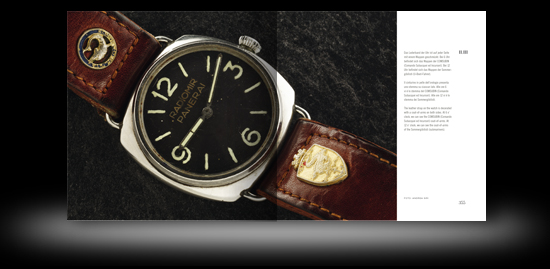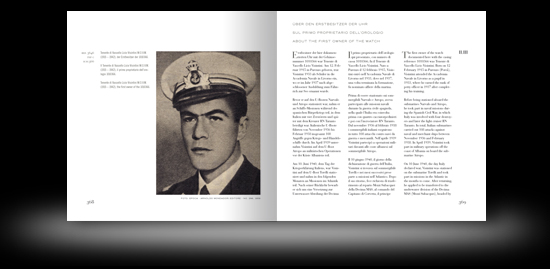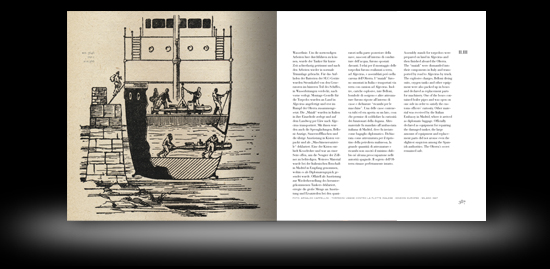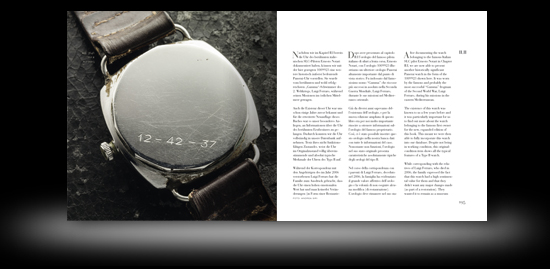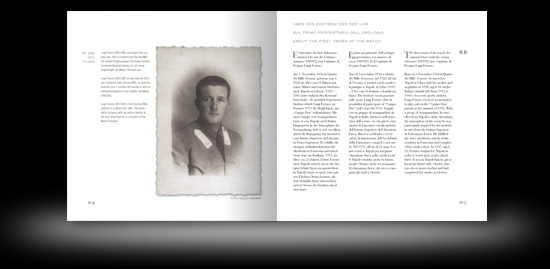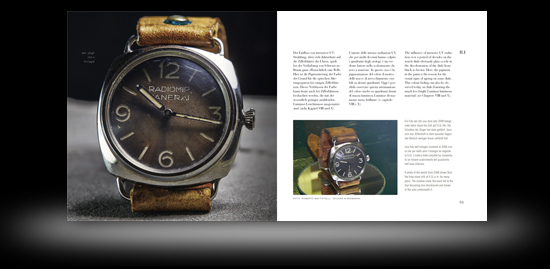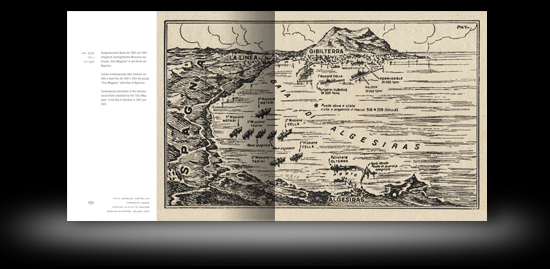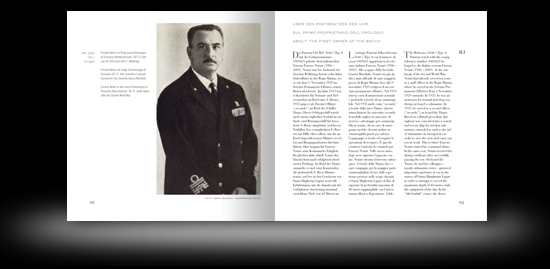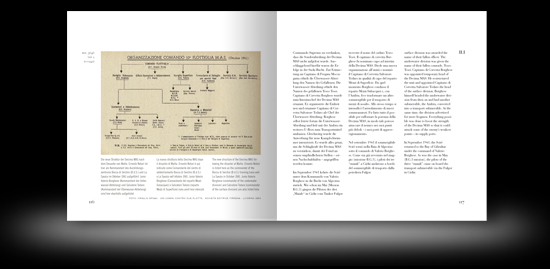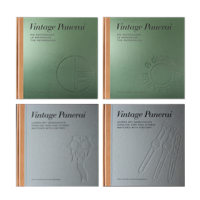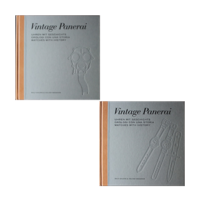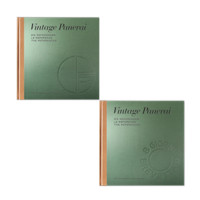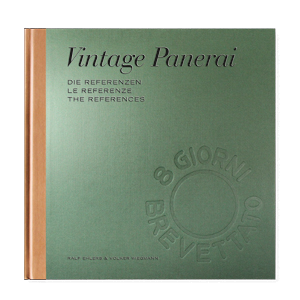Author Archive
25 July 1941 – today in history…
by Volker on Jul.25, 2024, under Allgemein
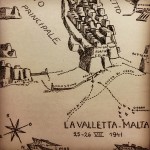 Augusta (Sicily) 11 pm. The night of 25 July 1941 marks the beginning of the “Operazione Malta 1”, known by its disastrous result for the Mezzi d’Assalto, only three months after the first successful attack with MT explosive boats against British ships in Souda Bay (Crete) on 26 March 1941. One day later, in the early morning of 26 July 1941, the Decima MAS lost the head of the flotilla (Capitano di Fregata Vittorio Moccagatta), the head of explosive boats (Capitano di Corvetta Giorgio Giobbe), the doctor of the flotilla (Tenente Medico Bruno Falcomatà), SLC pilots (including their inventor, Teseo Tesei) and MT explosive boats pilots during the attack of the harbour of La Valetta (Malta).
Augusta (Sicily) 11 pm. The night of 25 July 1941 marks the beginning of the “Operazione Malta 1”, known by its disastrous result for the Mezzi d’Assalto, only three months after the first successful attack with MT explosive boats against British ships in Souda Bay (Crete) on 26 March 1941. One day later, in the early morning of 26 July 1941, the Decima MAS lost the head of the flotilla (Capitano di Fregata Vittorio Moccagatta), the head of explosive boats (Capitano di Corvetta Giorgio Giobbe), the doctor of the flotilla (Tenente Medico Bruno Falcomatà), SLC pilots (including their inventor, Teseo Tesei) and MT explosive boats pilots during the attack of the harbour of La Valetta (Malta).
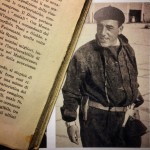 On a side note of the history, the commander of the explosive boats / “Mezzi di Superficie”, Giorgio Giobbe (1906-1941), is well known for wearing his Panerai watch on his right wrist in a photo taken prior the mission against Malta (see page 111-115 in chapter II.I). More about missions and watches of the Decima MAS can be found here.
On a side note of the history, the commander of the explosive boats / “Mezzi di Superficie”, Giorgio Giobbe (1906-1941), is well known for wearing his Panerai watch on his right wrist in a photo taken prior the mission against Malta (see page 111-115 in chapter II.I). More about missions and watches of the Decima MAS can be found here.
Read more about “The birth of a legend – the first Panerai watches (1935-1939)” in chapter I, followed by the timeline of the missions during the Second World War in chapter II.I – more information on the historic content in our “The References” book set can be found here. Read about the featured watches from Guido Panerai & Figlio in the first and second volume here.
A look into our book “The References” 1950’s-1960’s
by Volker on Jul.17, 2024, under Allgemein
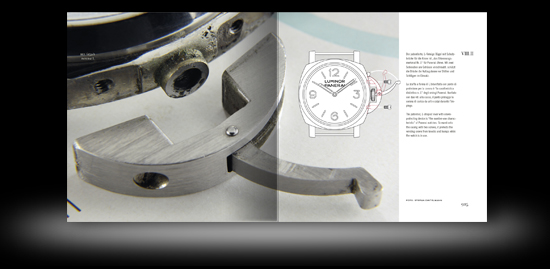
Page 924-925 – the patented, L-shaped lever with crown-protecting device of a Ref. 6152/1.
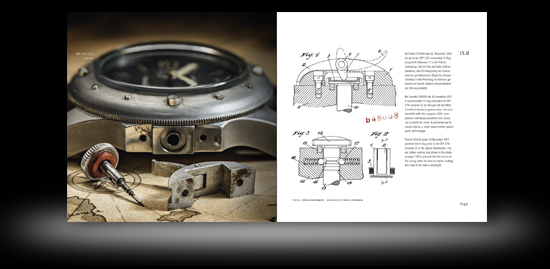
Page 1148-1149 – patent 545668 (dated 30 November 1955) presents the O-ring used in the GPF 2/56.
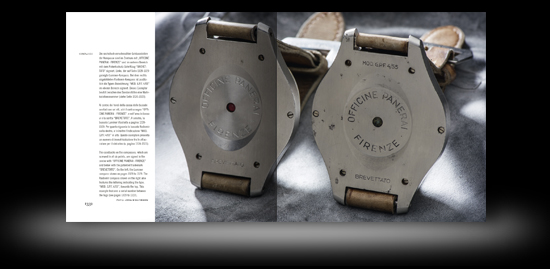
Page 1332-1333 – the casebacks on the compasses, which are screwed in at six points, ar signed in the center with „OFFICINE PANERAI – FIRENZE“ and below with the patented trademark „BREVETTATO“. The Radiomir compass on the right also features the „MOD. G.PF. 4/55“.
 “The References” 1950’s-1960’s at a glance:
“The References” 1950’s-1960’s at a glance:
37 Vintage Panerai watches from the 1950’s to 1960’s. Featured References: 6152, 6154, 6152/1, GPF 2/56 and modified References, compasses and depth gauges followed by an overview of the straps and buckles used in this era.
26 x 26 cm, 696 pages, trilingual (German, Italian and English language in one book), 27 database charts, 353 illustrations, including rare historic photos from Italian and Egyptian frogmen, hardback jacket, slipcase.
Visit our bookstore and enjoy reading soon!
A look into our book “The References” 1930’s-1940’s
by Volker on Jul.10, 2024, under Allgemein
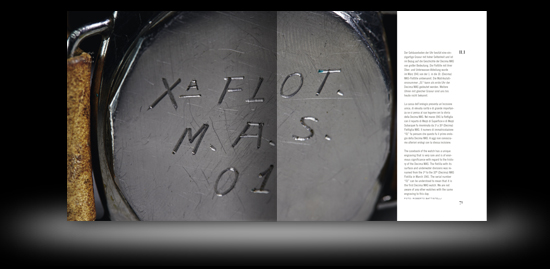
Page 70-71 – engraved caseback of a Ref. 3646 / Type A “Radiomir Panerai”.
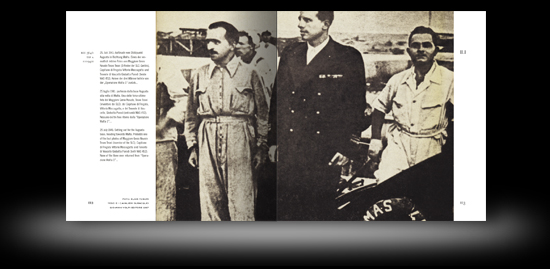
Page 112-113 – 25 July 1941: „Operazione Malta 1“ – setting out for the Augusta base, heading towards Malta: Teseo Tesei (SLC), Vittorio Moccagatta and Giobatta Parodi (MAS 452).
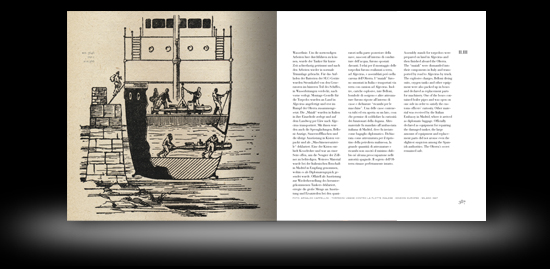
Page 358-359 – contemporary illustration of SLC missions starting from the “Olterra” in the Bay of Gibraltar (1942 and 1943).
 “The References” 1930’s-1940’s at a glance:
“The References” 1930’s-1940’s at a glance:
33 Vintage Panerai watches, history, instruments and straps of the 1930’s-1940’s. Featured References: 2533, 3646, the Mare Nostrum chronograph and compasses.
26 x 26 cm, 696 pages, trilingual (German, Italian and English language in one book), 19 database charts, 383 illustrations, including rare historic photos from the 2nd World War, hardback jacket, slipcase.
Visit our bookstore and enjoy reading soon!
Naval heritage – Licio Visintini’s Radiomir
by Volker on Jun.21, 2024, under Allgemein
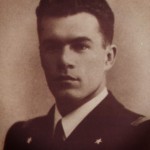 SLC pilot Tenente di Vascello Licio Visintini M.O.V.M. took part on several missions against the allied fleet in Gibraltar as a member of the Mezzi d’Assalto.
SLC pilot Tenente di Vascello Licio Visintini M.O.V.M. took part on several missions against the allied fleet in Gibraltar as a member of the Mezzi d’Assalto.
After returning from the SLC missions B.G.3, being pilot of SLC 160 in May 1941 and B.G.4, being pilot of SLC 220 in September 1941 (both carried out from the transport submersible “Scirè” under the command of Junio Valerio Borghese), Licio Visintini, twice awarded with the silver medal for galantry at war (M.A.V.M.), returned to Gibraltar undercover in June 1942. He built the core of the “Orsa Maggiore” on board the tanker Olterra – the new, hidden base for the SLC units in the bay of Gibraltar (which remained undiscovered until September 1943). Read more on the Olterra here.
After months of preparations and training in complete secrecy, the SLC mission B.G.5 took progress in December 1942 with three SLC devices of the 200-series: 228, 229 and 236. For Licio Visintini, Giovanni Magro and Salvatore Leone it was a missions with no return. Read the complete story about their fateful SLC mission and how Licio Visintini’s Ref. 3646 / Type C with “Radiomir Panerai” dial returned to Italy and changed ownership two times after, on page 368-397.
Page 354 – 355: Licio Visintini’s 3646 / Type C. The strap has been decorated with coat-of-arms of the Sommergibilisti (submariners) and COMSUBIN (Raggruppamento subacquei e incursori “Teseo Tesei”). The Rolex movement of the watch has been introduced here.
Page 368 – 369: About the first owner of the watch. Tenente di Vascello Licio Visintini M.O.V.M.
Page 386 – 387: Illustration of the secret SLC base Olterra at the pier in Algeciras / Bay of Gibraltar.
The watch of Tenente di Vascello Licio Visintini (1915 – 1942) and the history behind can be read in the book “The References” 1930’s-1940’s (chapter II.III, page 350 to 397). Read more on Licio Visintini here. Enjoy reading!
Naval heritage – Luigi Ferraro’s Radiomir
by Volker on Jun.14, 2024, under Allgemein
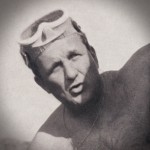 Without a doubt, Luigi Ferraro was a man whose entire life was shaped by the sea. As a talented swimmer, he had been fascinated by the element of water since his youth. During the Second World War, he became one of the best-known frogmen of all time and showed great courage and skill during his dangerous missions, taking himself into the very limits both physically and mentally.
Without a doubt, Luigi Ferraro was a man whose entire life was shaped by the sea. As a talented swimmer, he had been fascinated by the element of water since his youth. During the Second World War, he became one of the best-known frogmen of all time and showed great courage and skill during his dangerous missions, taking himself into the very limits both physically and mentally.
His Radiomir watch, a Ref. 3646 / Type B with riveted plastic dial, has been with him since he was a “Gamma” frogman in the Second World War. With the kind support of his family we were able to document his watch in chapter II.II of our book “The References” together with a view onto his life – before, during and after the war.
Page 194 – 195: View on the engraved caseback of Luigi Ferraro’s 3646 / Type B.
In January 1943, Luigi Ferraro obtained his qualification to carry out underwater missions. He was first posted to North Africa, where he was to attack ships from the British armed forces in the Port of Tripoli. Before the attack could take place, he was ordered back to Italy. Soon later he became an instructor for “Gamma” frogmen of the Mezzi d’Assalto. In May 1943, he was posted to La Spezia and received instructions from Junio Valerio Borghese for a new mission – this time, in the eastern Mediterranean.
Page 204 – 205: About the first owner of the watch. Luigi Ferraro in uniform, photo dated to 1943. The white collar insignia (with an anchor symbol at the top) show that he is a member of the Mezzi d’Assalto.
Luigi Ferraro carried out four missions during July and August 1943 in the Turkish ports of Alexandretta and Mersina. These four missions resulted in the sinking of two ships and the deactivation of a third. Undiscovered and highly successful, the “Operazione Stella” was one of the most effective operations of the Mezzi d’Assalto. Luigi Ferraro was awarded with the M.O.V.M. (gold medal for galantry at war) in the rank of Tenente Artiglieria.
Page 210 – 211: Sketch of two of the four “Stella” missions carried out by Luigi Ferraro in Alexandretta.
After his time as a “Gamma” frogman, he used the skills and abilities he had learnt in the war for civilian purposes. He was able to pass on his extensive knowledge and significant experience to countless divers. Luigi Ferraro was promoted by the Marina Militare to Capitano di Fregata di Complemento in the year 2000.
The watch of Luigi Ferraro (1914 – 2006) and the history behind can be read in the book “The References” 1930’s-1940’s (chapter II.II, page 190 to 225). Read more on “Operazione Stella” here. Enjoy reading!
Naval heritage – Ernesto Notari’s Radiomir
by Volker on Jun.07, 2024, under Allgemein
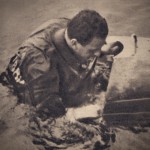 Since 1992, the Vintage Panerai watch which was worn by SLC pilot Ernesto Notari during the Second World War, is on display at the Museo Tecnico Navale in La Spezia. Back then, the watch’s first owner decided to give the watch to the museum on his own wish. It was accepted into the museum’s inventory and since then, it has been on display in a cabinet with other rare items from the Mezzi d’Assalto, where it is resting on one of the last remaining SLC devices.
Since 1992, the Vintage Panerai watch which was worn by SLC pilot Ernesto Notari during the Second World War, is on display at the Museo Tecnico Navale in La Spezia. Back then, the watch’s first owner decided to give the watch to the museum on his own wish. It was accepted into the museum’s inventory and since then, it has been on display in a cabinet with other rare items from the Mezzi d’Assalto, where it is resting on one of the last remaining SLC devices.
In its unaltered original condition, it was an important source of information for us. With the support of the museum we were able to enter all details of the watch into our database. Beside the importance by the history behind, this watch marks the earliest known 3646 / Type A and so became the first watch in chapter II. With its engraved caseback it is of enormous significance with regard to the history of the Mezzi d’Assalto of the Royal Italian Navy.
Page 60 – 61: Comparing photos of Ernesto Notari’s Ref. 3646 / Type A from 2014 and 2008.
Being a member of the Mezzi Subacquei, Ernesto Notari trained at Bocca di Serchio, the secret base of the underwater special unit in Tuscany. In early 1940, the first training exercises were carried out, resulting in the 1935 concept of Teseo Tesei and Elios Toschi evolving into a real, secret weapon. After the desaster of Malta in July 1941, Ernesto Notari was commander of the training base Bocca di Serchio.
In 1943 Notari posted to the secret base in the Bay of Algeciras, the Olterra. After the successful return from mission B.G.6 in May 1943, Notari was awarded with the M.A.V.M. (silver medal for galantry at war) in the rank of Capitano di Corvetta. He solved another successful mission in August 1943: B.G.7, for which he was awarded M.A.V.M. one more time. B.G.7 was the last mission carried out from the tanker Olterra. The declaration of the ceasefire by Italy on 8 September 1943 brought all further plans to an end. The secret of the Olterra was only discovered by the British in October 1943. The undercover missions of the Decima MAS in Gibraltar were therefore highly successful. Although they did not have any major successes like in Alexandria, the continued presence of the Decima for a period of almost three years exercised constant pressure on the British. The use of Villa Carmela and the Olterra as secret starting bases for night-time missions showed the decisiveness of the Decima MAS and its courageous men – one of whom was Ernesto Notari.
Page 150 – 151: Illustration of the missions completed by the “Orsa Maggiore” in the Bay of Algeciras in 1942 and 1943.
After the Second World War, Ernesto Notari continued his career with the Marina Militare. As a Capitano di Fregata, he commanded the reformed special unit from 10 October 1947 to 25 September 1948. As a Capitano di Vascello, Notari served his second captaincy from 1 October 1950 to 14 March 1951. In 1952, he assumed command of the Sezione Tecnica Autonoma in Bacoli. The secret base in the province of Naples existed from 1949 to 1957 before being moved to Varignano as part of a restructuring process . This site was home to some of the remaining Mezzi d’Assalto equipment. By the end of his Navy career, Ernesto Notari had reached the rank of Vice-Admiral (Ammiraglio di Squadra).
Page 92 – 93: About the first owner of the watch, Admiral Ernesto Notari, photo taken after the Second World War.
The watch of Ernesto Notari (a Ref. 3646 / Type A with „Radiomir Panerai“ dial) and the history behind can be read in the book “The References” 1930’s-1940’s (chapter II.I, page 58 to 153). Read more on the Olterra here. Enjoy reading!
Missions and Watches of the Decima MAS
by Volker on May.29, 2024, under Allgemein
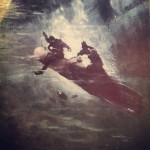 Watches from Guido Panerai & Figlio are deeply connected to the history of the Royal Italian Navy during the Second World War. In our book “The References” we have included an overview of the missions of the “Decima” aside the legendary watches, which were an important part of the units of the underwater (“Mezzi Subacquei” / “Gamma” frogmen and SLC) and surface (“Mezzi di Superficie” / explosive boats) special forces of the Decima MAS (“Mezzi d’Assalto”).
Watches from Guido Panerai & Figlio are deeply connected to the history of the Royal Italian Navy during the Second World War. In our book “The References” we have included an overview of the missions of the “Decima” aside the legendary watches, which were an important part of the units of the underwater (“Mezzi Subacquei” / “Gamma” frogmen and SLC) and surface (“Mezzi di Superficie” / explosive boats) special forces of the Decima MAS (“Mezzi d’Assalto”).
After the disaster at Malta in July 1941 (“Operazione Malta 1”), the Decima MAS was restructured. Capitano di Fregata Ernesto Forza became the new commander of the Decima MAS. The underwater division was given the name of the fallen inventor of the SLC, Teseo Tesei, now commanded by Junio Valerio Borghese. The surface division was given the name of the fallen commander of the Decima, Vittorio Moccagatta, now commanded by Salvatore Todaro (the photo below shows a historical chart of the new structured Mezzi d’Assalto as of October 1941).
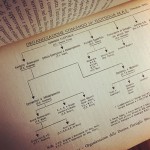 Chapter I and II of the first volume (1930’s-1940’s) carry the history of a new weapon – the SLC slow running torpedo, called “maiale” – and the men who trusted on the watches from Guido Panerai & Figlio during their dangerous missions in deep and darkness of the mediterranean sea. Because of the significance of the fascinating history behind these watches, we have dedicated our book “The References” to the inventors of the SLC, Teseo Tesei and Elios Toschi.
Chapter I and II of the first volume (1930’s-1940’s) carry the history of a new weapon – the SLC slow running torpedo, called “maiale” – and the men who trusted on the watches from Guido Panerai & Figlio during their dangerous missions in deep and darkness of the mediterranean sea. Because of the significance of the fascinating history behind these watches, we have dedicated our book “The References” to the inventors of the SLC, Teseo Tesei and Elios Toschi.
Chapter II of “The References” features some of the rarest Panerai watches owned by famous and high decorated Italian veterans. The first watch of the Reference 3646 / Type A, featured in chapter II.I, belonged to Admiral Ernesto Notari. He was awarded with the Silver Medal for Gallantry at War (M.A.V.M.) for the mission B.G.6 in May 1943.
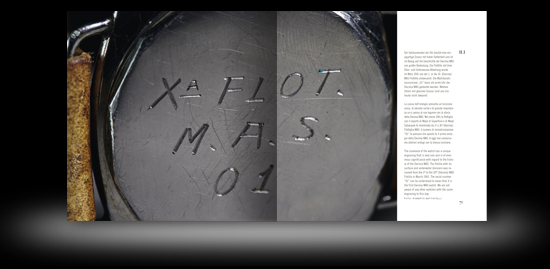
The documentation of the watch (see above page 70-71) and the history of Ernesto Notari, including a summary of the “Mezzi d’Assalto” missions until 8 September 1943 can be read from page 58 to 153 in chapter II.I.
Chapter II.II, about the watches of the Reference 3646 / Type B, features the watch of the legendary “Gamma” frogman Luigio Ferraro. He was awarded with the Gold Medal for Gallantry at War (M.O.V.M.) for his “Stella” missions in the eastern part of the mediterranean sea in 1943.
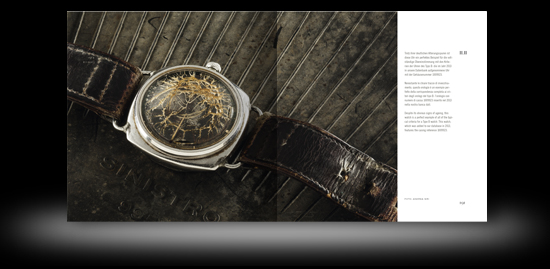
The documentation of the watch (see above page 190-191) and the history of Luigi Ferraro can be read from page 190 to 225 in chapter II.II.
A watch of the Reference 3646 / Type C which belonged to the SLC pilot Licio Visintini is featured in chapter II.III. Visintini took part in several missions against the allied fleet in Gibraltar. After surviving from mission B.G.3 and B.G.4 in 1941, Visintini returned undercover to Gibraltar in June 1942 where he built the core of the “Orsa Maggiore” on board the tanker Olterra – the hidden base for the SLC units of the “Decima” in the bay of Gibraltar. Mission B.G.5 turned into a “mission with no return” for Licio Visintini in December 1942…
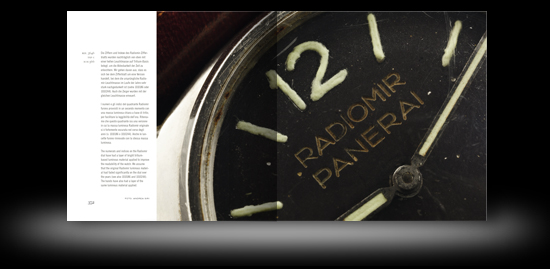
The documentation of the watch (see above page 352-353) and the history of Licio Visintini can be read from page 350 to 397 in chapter II.III.
Information on “The References” 1930’s-1940’s (first volume) can be found here.
Enjoy reading!
[Ralf Ehlers & Volker Wiegmann]
Reading a frogman’s battle report…
by Volker on May.03, 2024, under Allgemein
One of the rarest historical documents which we came across during the research of our book “History2”: a handwritten battle report of a frogmen mission at the Pomeranian coast, dated April 3rd, 1945.
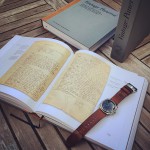 Documents from the last weeks of the Second World War are today, without a doubt, very hard to find – if existing after more than 70 years at all… With the support of the family of the German “Kampfschwimmer”, who once wrote this report after he returned safely from the combat zone, we were able to include this battle report (page 672-673 shown on the coffee table shot on the left) in chapter VII of “History2” (featuring the chapters V-IX with a total of 480 pages).
Documents from the last weeks of the Second World War are today, without a doubt, very hard to find – if existing after more than 70 years at all… With the support of the family of the German “Kampfschwimmer”, who once wrote this report after he returned safely from the combat zone, we were able to include this battle report (page 672-673 shown on the coffee table shot on the left) in chapter VII of “History2” (featuring the chapters V-IX with a total of 480 pages).
Interesting details in his handwritten battle report are the times which he mentioned aside other details, all easily readable on the sandwich dial of the Ref. 3646 / Type D (with 5 minute markers / indices) he was wearing during the mission: He wrote down 21:50, 23:30, 23:45, 23:50-0:30 and finally 2:05 AM – the moment he left the waters – after 4:15 hours trying to attack the Wollin railroad bridge together with a group of four frogmen from the “Einsatzgruppe Keller”, towing two mines thru the waters of the Dievenow.
One of these five frogmen is featured in our book “History1”. Several pages of his diary are published in chapter II, where he wrote down what happened during the frogmen attack of the Gristow bridge at the Pomeranian coast (page 134-143).
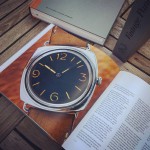 Read more on further rare documents which helped us to capture the history behind the Ref. 3646 / Type D “Kampfschwimmer” watch, shown on the coffee table shot on the left here. Photos from the years 1944 and 1945 showing this watch on the frogman’s wrist, as well as his identification papers and travel documents issued in Venice, helped us to reconstruct the route he took to the mission grounds.
Read more on further rare documents which helped us to capture the history behind the Ref. 3646 / Type D “Kampfschwimmer” watch, shown on the coffee table shot on the left here. Photos from the years 1944 and 1945 showing this watch on the frogman’s wrist, as well as his identification papers and travel documents issued in Venice, helped us to reconstruct the route he took to the mission grounds.
Obviously his handwritten battle report never reached the headquarters but somehow he managed to keep it safe for his personal records, giving us today, more than 70 years later, a detailed inside view on a mission he carried out together with four frogmen at the Eastern Front in April 1945…
Our two “History” books can be ordered only in our bookstore.
Enjoy reading stories behind these watches!
[Ralf Ehlers & Volker Wiegmann]
Mezzi d’Assalto
by Volker on Apr.14, 2024, under Allgemein
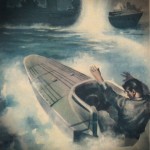 Just a few days before the first success of the MT explosive boats on 26 March 1941 in Souda Bay, the 1st MAS Flotilla changed its name and became the 10th MAS Flotilla – the Decima MAS on 15 March 1941. Capitano di Fregata Vittorio Moccagatta was the new commander and divided the special weaponry – Mezzi d’Assalto – into two divisions:
Just a few days before the first success of the MT explosive boats on 26 March 1941 in Souda Bay, the 1st MAS Flotilla changed its name and became the 10th MAS Flotilla – the Decima MAS on 15 March 1941. Capitano di Fregata Vittorio Moccagatta was the new commander and divided the special weaponry – Mezzi d’Assalto – into two divisions:
The surface division – Mezzi di Superficie – under the command of Capitano di Corvetta Giorgio Giobbe (see photo on page 115, commander Giobbe wearing clearly visible a Panerai watch on his right wrist) had a fleet of various explosive boats (category MT, MTM, MTR, MTS, MTMS, SMA and MTL) for sabotage operations, based in La Spezia.
 The underwater division – Mezzi Subacquei – under the command of Capitano di Corvetta Junio Valerio Borghese operated the diving School in Livorno, the SLC training base at Bocca di Serchio, the transport submersibles (Scirè and Ambra) and the frogmen of the “Gruppo Gamma”.
The underwater division – Mezzi Subacquei – under the command of Capitano di Corvetta Junio Valerio Borghese operated the diving School in Livorno, the SLC training base at Bocca di Serchio, the transport submersibles (Scirè and Ambra) and the frogmen of the “Gruppo Gamma”.
After the desaster at Malta in July 1941 (“Operazione Malta 1”), the Decima MAS was restructured. Capitano di Fregata Ernesto Forza became the new commander of the Decima MAS. The underwater division was given the name of the fallen inventor of the SLC, Teseo Tesei, now commanded by Junio Valerio Borghese. The surface division was given the name of the fallen commander of the Decima, Vittorio Moccagatta, now commanded by Salvatore Todaro. See page 116 with a historical chart of the new structured Mezzi d’Assalto as of October 1941:
Ernesto Notari became commander of the SLC training base at Bocca di Serchio. His Ref. 3646 / Type A “Radiomir Panerai” (with its unique engraved caseback) is documented on page 58 – 91.
Read more about the Mezzi d’Assalto on page 92 – 153 in chapter II.I of the book “The References” 1930’s-1940’s.
26 March 1941 – today in history…
by Volker on Mar.26, 2024, under Allgemein
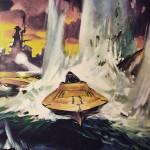 During the winter of 1940-1941 the human torpedo attacks were suspended, at least until the following spring. A detachment of MT explosive boats was based in the Dodecanese, where it trained under the command of Vittorio Moccagatta on the island of Leros with the objective of attacking Souda Bay and the British traffic to Greece.
During the winter of 1940-1941 the human torpedo attacks were suspended, at least until the following spring. A detachment of MT explosive boats was based in the Dodecanese, where it trained under the command of Vittorio Moccagatta on the island of Leros with the objective of attacking Souda Bay and the British traffic to Greece.
Vittorio Moccagatta was ordered back to Italy on 23 January 1941, where he became the commander of the 1st MAS Flotilla in La Spezia. His suggestions to the Italian naval commando assumed in the result that the 1st MAS Flotilla became the 10th MAS Flotilla – the Decima MAS – on 15 March 1941, which was divided into two divisions from that time:
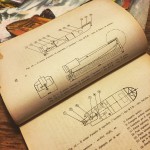 The surface division – Mezzi di Superficie – under the command of Capitano di Corvetta Giorgio Giobbe with a fleet of various explosive boats (category MT, MTM shown by the historic sketches on the left, MTR, MTS, MTMS, SMA, MTL) and motorboats for sabotage operations.
The surface division – Mezzi di Superficie – under the command of Capitano di Corvetta Giorgio Giobbe with a fleet of various explosive boats (category MT, MTM shown by the historic sketches on the left, MTR, MTS, MTMS, SMA, MTL) and motorboats for sabotage operations.
The underwater division – Mezzi Subacquei – under the command of Capitano di Corvetta Junio Valerio Borghese operated the diving School in Livorno, the SLC training base at Bocca di Serchio, the remaining transport submersibles Scirè and Ambra and the frogmen of the “Gruppo Gamma”. On a side note, in early 1941, the two initial transport submersibles for SLC devices, Iride and Gondar, were already lost with the failure of „Operazione G.A.1“ and „Operazione G.A.2“ in August and September 1940.
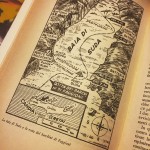 On 26 March 1941, the surface division – Mezzi di Superficie – of the Decima MAS achieved initial successes: six MT-type explosive boats broke through the blockades in Souda Bay (Crete, see historic map on the left) damaging the heavy cruiser York and the tanker Pericles.
On 26 March 1941, the surface division – Mezzi di Superficie – of the Decima MAS achieved initial successes: six MT-type explosive boats broke through the blockades in Souda Bay (Crete, see historic map on the left) damaging the heavy cruiser York and the tanker Pericles.
During the night, the servicemen Luigi Faggioni (commander), Angelo Cabrini, Tullio Tedeschi, Alessio De Vito, Lino Beccati and Emilio Barberi) were transported to the target area aboard the destroyers Crispi and Sella. These two destroyers were equipped with electrically powered cranes for placement of the MT-type explosive boats on the water, which was carried out in just a few minutes, ten miles from Souda’s entrance, at 2330 hours on 25 March 1941. Unnoticed by the enemy, the MT-type explosive boats managed to cross three barricades and reached their targets in the early hours of the morning of 26 March 1941.
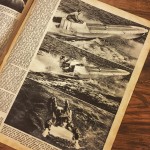 Two MT-type explosive boats attacked the York (the pilots abandoned their boats 80 meters before hitting the ship, see historic photos on the left). Another two MT-type explosive boats attacked the Pericles. Commander Faggioni tried to hit the Coventry but his boat missed the cruiser and exploded on the coast. The sixth MT-type explosive boat missed its target too, but remained intact and was captured by the British. All six pilots of the explosive boats survived the attack and became POW.
Two MT-type explosive boats attacked the York (the pilots abandoned their boats 80 meters before hitting the ship, see historic photos on the left). Another two MT-type explosive boats attacked the Pericles. Commander Faggioni tried to hit the Coventry but his boat missed the cruiser and exploded on the coast. The sixth MT-type explosive boat missed its target too, but remained intact and was captured by the British. All six pilots of the explosive boats survived the attack and became POW.
Read more about the timeline of the missions during the Second World War in chapter II.I on page 106-146. Vittorio Moccagatta is featured on page 112-113, the attack in Souda Bay is featured on page 108-109.

